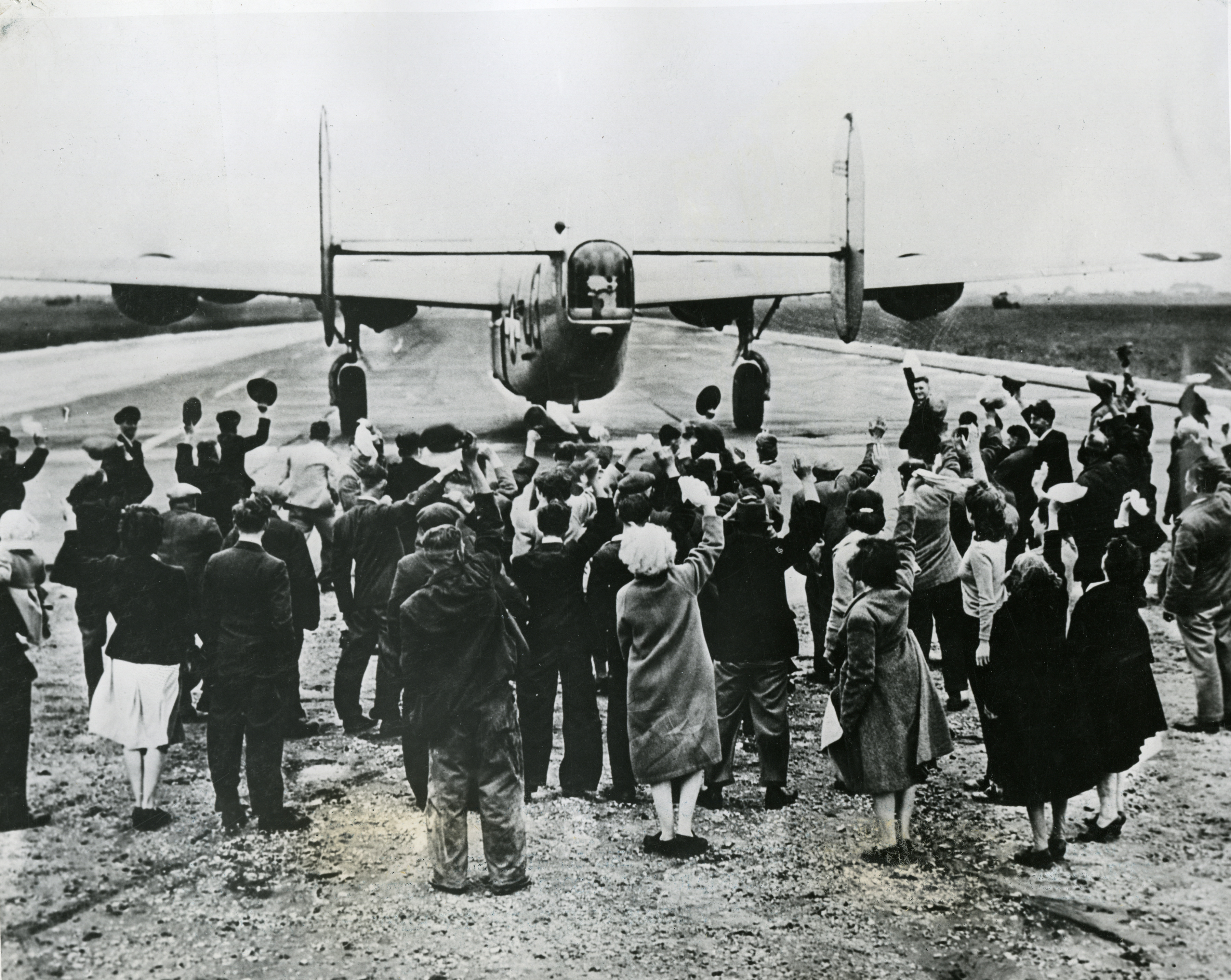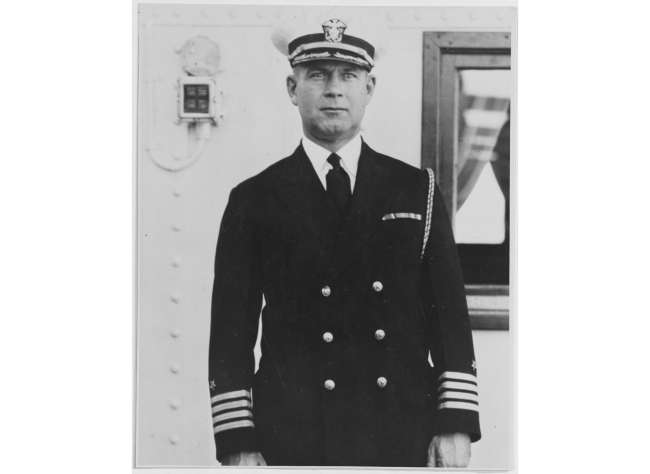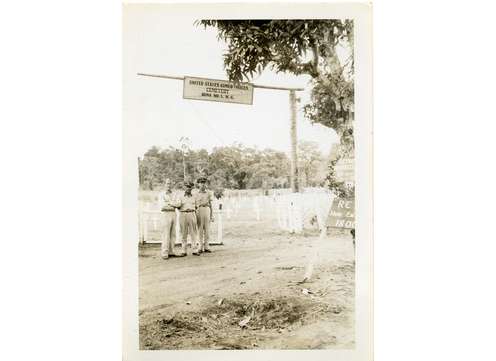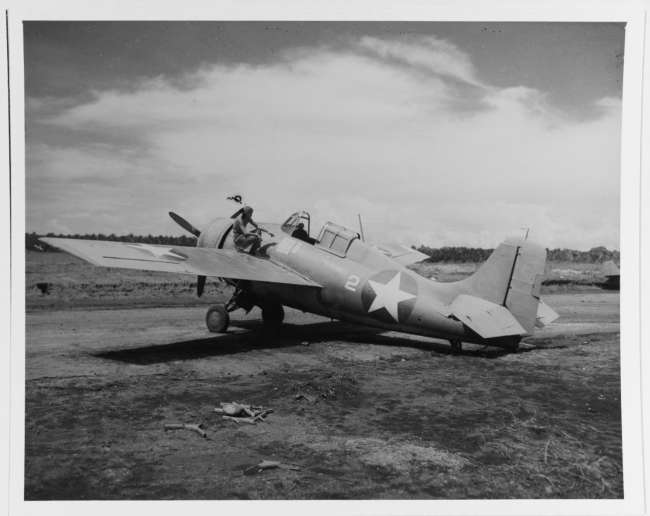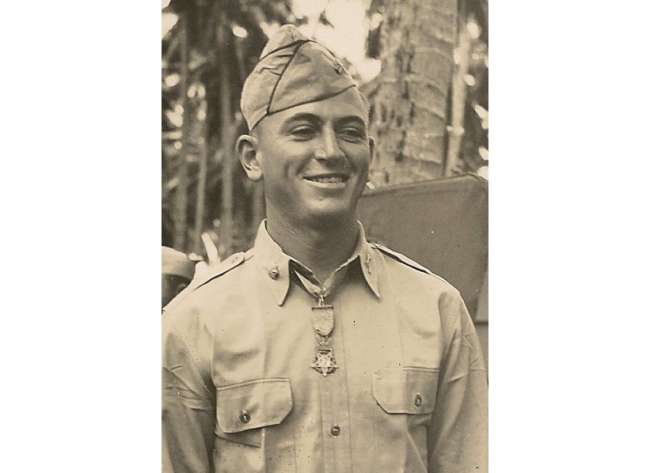Listen: Apple Podcasts or Spotify.
About the Episode
This is World War II on Topic: Veteran Voices. This episode is brought to you by the Museum’s Education Department and The Jenny Craig Institute for the Study of War & Democracy.
In April 2020, Dr. Tyler Bamford, who was serving as the Institute’s Leventhal Research Fellow, had a conversation with Museum Volunteer and World War II Veteran, Steve Ellis.
Steve served in the US Navy from 1944 to 1946 aboard LST-751. He took part in the campaigns to liberate the Philippines and survived Japanese Kamikaze attacks. Here he recounts those harrowing experiences.
If you would like to view the original conversation, you can see it here:
Topics Covered in this Episode
- US Navy
- Landing Ship, Tank
- Philippines
- Kamikaze attacks
Featured Historians & Guests
Steve Ellis
WWII Veteran Steve Ellis served in the US Navy from 1944 to 1946 aboard LST-751. A Tulane graduate, Museum volunteer, and lifelong New Orleans resident, Ellis took part in the campaigns to liberate the Philippines and survived Japanese Kamikaze attacks.
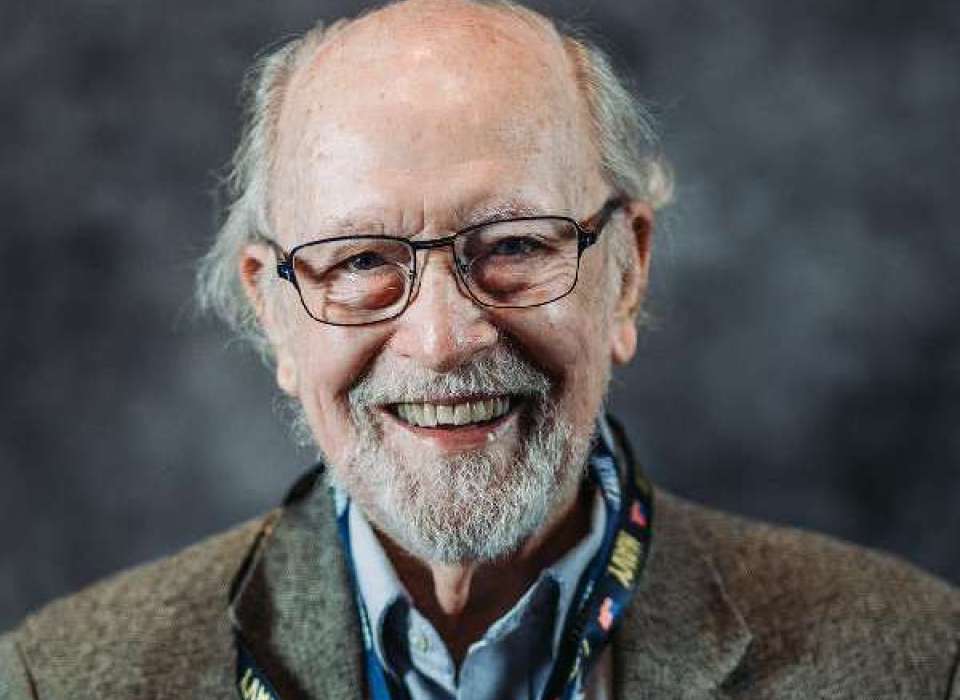
Tyler Bamford, Ph.D.
Tyler was the inaugural Sherry and Alan Leventhal Research Fellow at the Institute for the Study of War and Democracy from September 2019 to March 2021. He was a 2011 Beinecke Scholar, and his research has been supported by the Army Heritage Center Foundation, the Center for the Study of Force and Diplomacy, and the Society for Military History. Currently, he is a military historian with the Naval History and Heritage Command in Washington, D.C.
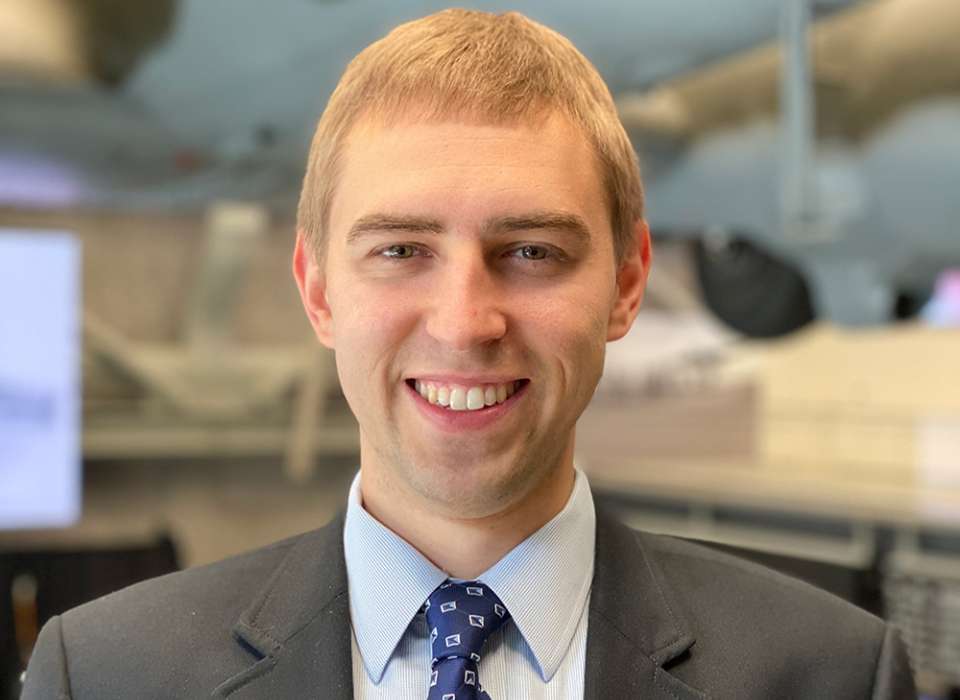
Related Content
-
Article Type
Valor at Pearl Harbor: Rear Admiral Isaac C. Kidd’s Medal of Honor
Bravery—even unto death—was evident everywhere as Imperial Japan’s air and sea forces struck the US naval base at Pearl Harbor on December 7, 1941.
-
Article Type
Kenneth Gruennert and Elmer Burr’s Medals of Honor
During the Battle of Buna, two soldiers of the 32nd Infantry Division went above and beyond the call of duty.
-
Article Type
Guadalcanal: The Joint Fight
While the campaign marked the first offensive victory for the Americans, it provided more than just a morale boost and a checking of Japanese aggression. This campaign illustrated the powerful synergy of American joint operations.
-
Article Type
From Oahu to Guadalcanal: Charles Willis Davis’s Medal of Honor
World War II ripped millions of men and women from their homes and hurled them around the globe. Americans like Charles Willis Davis discovered, though, under the most extreme circumstances, that they possessed incredible courage and ability.
Sponsors
"World War II On Topic" is made possible by The Herzstein Foundation.
Transcript
Jeremy Collins
Hello. I'm Jeremy Collins, the Director of Conferences and Symposia at the National World War II Museum in New Orleans. Thanks for tuning in to World War II On Topic, Veteran Voices. This episode is brought to you by the Museum's Education Department and the Jenny Craig Institute for the Study of War and Democracy.
In April of 2020, Dr. Tyler Bamford, who was serving as the institute's Leventhal Research Fellow, had a conversation with museum volunteer and World War II veteran Steve Ellis. Steve served in the US Navy from 1944 to 1946 aboard LST-751. He took part in the campaigns to liberate the Philippines and survived Japanese kamikaze attacks. Here he recounts those harrowing experiences.
Dr. Tyler Bamford
I am the Alan and Sherry Leventhal Research Fellow here at the National World War II Museum in the Institute for the Study of War and Democracy. And today it is my pleasure to be joined by Judge Steve Ellis, a World War II veteran of the US Navy from 1944 to 1946. And I'm going to be interviewing him about his wartime service today, and then we'll open it up to questions. So we look forward to a great discussion. Thanks so much for joining me today, Steve.
Steve Ellis
My pleasure.
Dr. Tyler Bamford
So, let's jump right into it. Give us a sense, before the war, of what your childhood was like, where did you grow up and go to school?
Steve Ellis
Well, I grew up in New Orleans and I went to New Orleans Academy, which is a small, private military school. So I was in uniform from the time I was six years old. My mother taught there, which is why I was going. But I graduated in 1941.
And after I graduated I knew I was going to Tulane because I'd won a scholarship there. But my daddy took me up to the Navy building in Tulane and signed me up for the ROTC. Now, that was fine with me because I kind of liked the Navy anyhow. And a bunch of my classmates also joined and some of my friends from other schools joined, so I knew a lot of people in it and that got me started.
Dr. Tyler Bamford
So you were already in school at Tulane when Pearl Harbor was attacked, is that right?
Steve Ellis
Yeah, I was already in the Navy, so I was safe from the draft. I was also too young to be drafted. But anyhow, I was safe from the draft. I was in service before the war started.
Dr. Tyler Bamford
So did you specifically want to join the Navy? Or was that kind of just the easiest thing to do? Or what made you choose the Navy?
Steve Ellis
Well, kind of all of the above. My daddy really wanted me to be in the Navy. And I knew a little bit about it and I really liked the way the uniforms looked, so that was a good thing for me to do.
Dr. Tyler Bamford
It's all about the uniforms, all about the looks. So had you ever been on a boat before this?
Steve Ellis
Rowboat. I'd been in a canoe and maybe a sailboat, that's about it.
Dr. Tyler Bamford
So, based on that experience, you were like, "You know what's great? I'm going to spend my war at sea." Okay. So you were commissioned in February of 1944, at the age of 19. So what kind of training did you get in the Navy?
Steve Ellis
Well, in the ROTC we were trained to, well, we learned the language, fore and aft and [?], port and starboard, all that. So we learned all that in school. We learned basic seamanship and naval tradition and that sort of thing, but nothing of really practical use except navigation, navigation in my junior year.
And then, after I was commissioned, see, we were commissioned a year early. I still had another year to go in school, but they needed warm bodies to officer these amphibious ships that they were building by the hundreds. So they took all the junior classes and all the ROTC units in the whole country and slapped the stripe on their sleeves in February, 1944. And four days later, I was on a train headed for Camp Bradford, Virginia.
Now, Bradford was where they trained people for the LST program. The LCTs and LCIs were trained further up Chesapeake Bay at Solomons. We all went to Camp Bradford, which sat right next to Little Creek on Chesapeake Bay, at Hampton Road. And there were 15,000 people on that base when I got there. It was all Quonset huts, there was not a permanent building on the plate. It was terrible because the offices club only served beer and pig's knuckles, and it just wasn't a really nice place to be.
When we got there, everybody who hadn't been assigned to a class was sent to a place called the Happy Hour Club, which was anything but, and you sat there with nothing to do all day long. Finally, I got put in the class, I was tapped to be a gunner officer, and other guys got other jobs. One of my classmates became a stores officer, and Eddie Martin, my dear friend, became a communications officer. And miracle of miracles, we wound up in the same crew.
After I finished my gunnery training, and that was two weeks, I joined up with five other guys who had also had two weeks training on hoe to be a captain, an exec, and a communications officer. And we trained together for two weeks. We went out on LSTs and practiced running drills and things like that and went to classes.
And then at the end of that two weeks we joined up with our crew. 120 men that'd been going through the same thing. And so, we stayed with that crew for another two weeks, going out on LSTs and practicing running drills and that sort of thing, shooting the guns. And at the end of that two weeks, we got on a train and went to Pittsburgh, Pennsylvania, where they were building the LST-751. The LS-
Dr. Tyler Bamford
So did you choose to be a gunnery officer? Or did the Navy say, "Steve, you're now a gunnery officer"?
Steve Ellis
They blessed me with that, yes. I had no choice in the matter.
Dr. Tyler Bamford
So you were assigned to an LST. And for our viewers, what is an LST?
Steve Ellis
Okay. LST stands for landing ship tank. It's an ocean-going ship, which, when properly configured, can run up on an invasion beach and discharge cargo right onto the beach. It was a novel innovation. Nobody had had anything like that before. The idea was basically Winston Churchill's. And he wanted an ocean-going ship that could beach. And he sent it to his admiralty, they brought it to our Navy department. They assigned it to a naval aviator. And everything about what he did is still a matter of record, that they still have the napkin on which he drew his original concept for the ship, sitting in a ballroom somewhere.
Dr. Tyler Bamford
And it's not a terribly graceful looking ship. What did you think the first time you saw one?
Steve Ellis
Well, what did I know? I'd never seen a ship before anyhow. And I got to see my first one while I was still in school. They brought one through New Orleans and took my whole class down there to look at it. Little did we know that that's what our fate was going to be. But if you take the 965 off of that picture and put 751, you'd have my ship.
Dr. Tyler Bamford
They're very large ships though. They're 2,100 tons. And your crew, you said was about 120 men?
Steve Ellis
Yeah. [?] feet long and 50 feet wide. It had a flat bottom. You notice that the front two-thirds of the ship is all right down at the main deck. Underneath the main deck, I can't talk and point, right underneath the main deck is what we call a tank deck.
And you could fill up the tank deck with rolling stock. We only carried tanks once, but we carried trucks and Jeeps and half tracks and you name it. Anything that you could drive on and drive off, we carried. And they would load up the tank deck and then they would load up the main deck. So we could have 40 or 50 vehicles on board. Plus the crews, the guy that ran the vehicles. And we had accommodations along either side for maybe 250 men besides our crew.
And since we had to feed them when we were at sea, we had great big ice boxes. And we carried a large assortment of food and we had a very good stores officer. So on the 751, we really ate well and so did the guys we carried.
Dr. Tyler Bamford
And that's the most important thing when you're at sea, isn't it?
Steve Ellis
You better believe it.
Dr. Tyler Bamford
What was your job on your LST?
Steve Ellis
Okay, I'm the gunnery officer. Now, on the ship we had seven 40-millimeter anti-aircraft guns in 12 20-millimeter anti-aircraft guns. Those big tubs you see at the front of the 965 are what held the 40-millimeter guns. And alongside of the ship, I don't know if I can make them out, but alongside of the ship, six on either side, were the 20-millimeter guns. They ran all the way back to the stern. And then we had four more 40 on the stern of the ship.
My job was to see that those guns were always in firing condition and that the people who manned the gun were properly trained. And that's what I did.
Dr. Tyler Bamford
That's a pretty important job, especially in a war zone.
Steve Ellis
Very important in a war zone. I have to say that we really got very few opportunities to use the guns. We fired them during our shakedown cruise and we fired them once or twice when we were crossing the Pacific Ocean, at a balloon, which, I hate to say, survived.
And almost every time we fired the gun, something went wrong. I'd have to go down and fix the jam or something like that. But the first time we were in combat, during invading of the Philippines, was the first time every gun worked the way it was supposed to, and we never had another lick of trouble after that.
Dr. Tyler Bamford
But the guns just needed a little bit of pressure, that's what they needed. And I'm sure every time after one malfunctioned or every time when the crew didn't hit something, you're like, "That's not my fault, it's not the gun's fault. That's your fault for your aim."
Steve Ellis
Well, it's really very difficult to shoot a duck with a shotgun. And when your duck is an airplane and it's going 200 miles an hour and you have nothing but your eyes to get you onto the target, it's not easy, it's not easy.
Dr. Tyler Bamford
No, not at all.
Steve Ellis
We hit two of them, that wanted to crash into us. So when it counted, we hit the right guy.
Dr. Tyler Bamford
There you go. That's when it matters. So you started out as a gunnery officer, but did you do any other duties on the ship after that?
Steve Ellis
Well, yeah. The executive officer was supposed to be the navigator. And while we were at Camp Bradford, in order to kill time, I'd taken a refresher course in navigation. So that was on my record.
Well, we were going to pick up our overseas cargo in Gulfport, Mississippi, and we ran into Ship Island, a very large island.
Dr. Tyler Bamford
Oh, wow.
Steve Ellis
It's hard to miss. And we didn't, we hit it, and we had to be towed off the beach. And, of course, we're meant to beach, so it was okay. But we were towed off the beach, and the next morning the captains said I was the navigator.
So from then until we got across the Pacific Ocean, I was also, in addition to being the gunnery officer, I was the navigator. After the war, I was also a captain of a ship. I tell you, being the executive's a lot harder.
But ours was a good ship. And I can't say it ran itself, but it was well run when I got my job as exec, and it continued to be after that. Old habits-
Dr. Tyler Bamford
And the executive officer has to make the captain look good.
Steve Ellis
Oh, yeah. Yeah. Well, it was easy to make him look good. He was a unnatural leader and he just stepped into the job, the skipper, from being communications officer. Never missed a lick. Really was good.
Dr. Tyler Bamford
The National World War II Museum's Historic Research Services actually pulled your military file. And I have in front of me a comment from your commanding officer, in November of 1945, on LST-751. He wrote about you and he says that, "Steve has an alert mind, a pleasing personality, and is quick to make friends. He is well liked by officers and men aboard this ship. In his duties as executive officer, he has done a fine job of maintaining discipline among the crew." A resounding endorsement there.
Steve Ellis
Well, it helps when the captain grew up with you and is your best friend.
Dr. Tyler Bamford
Let's not sell yourself short though, Steve. So what campaigns did your ship take part in?
Steve Ellis
Well, our first campaign was the Philippines campaign. We were in Leyte Gulf on D-Day for the initial invasion. And we actually beached on D-Day plus 2, the 22nd of October. I should go back and say that October 20th was my 20th birthday and that was D-Day. And I forgot all about my birthday until I was going on watch at midnight. And I was relieving Eddie, and Eddie said, "Oh, by the way, happy birthday." That's the first I heard of it that day.
Dr. Tyler Bamford
So you had to make up for that celebration the next birthday, right?
Steve Ellis
Yeah, I guess. Not sure I remember the next one, but I sure do remember that one.
Dr. Tyler Bamford
Wow. So your ship, was it Leyte Gulf, you said, in October?
Steve Ellis
Uh-huh.
Dr. Tyler Bamford
And what was that invasion like? What kind of things did you see?
Steve Ellis
Well, we came in on the evening of D-Day. We were in Leyte Gulf. A big red moon came up over Samara Island as we were entering the Gulf. And just when we got there, a plane came out of nowhere and crashed in the water about 50 feet off our stern. And pieces of the plane wound up on the stern. And we had absolutely no idea what that was, it was a big flame burning there. And the ships behind us had to get out of line and come back in, in order to avoid running into the flame. We had no idea what that was.
We got our first action that morning. You always went to general quarters at dawn and at dusk in the Pacific Ocean area. And of course, dawn and dusk is when the aircraft attacks would take place, because your air cover had to land. And when you air cover landed, here would come the Japs. Because there was nobody up there yet, and we'd have to shoot at them.
Dr. Tyler Bamford
And your ship is one of the prime targets because you were the guys actually landing soldiers on enemy shores. So the Japanese specifically wanted to take out your ship.
Steve Ellis
In Leyte Gulf, the slope of the beach was shallow, so we couldn't get the ship all the way in to drop our ramp on the sand. So the CB's would push out a sand berm to the ship and it'd be all packed down by the bulldozer going back and forth over it. And then we'd drop the ramp on the berm and our cargo would drive off.
First truck off our ship, by the way, hit a land mine about a hundred yards up the beach and got blown over on its side. Of course, I don't know what happened to the driver. But we unloaded in pretty short order. We could unload in a half an hour if we had to. But we were stuck on the beach. The tide went out and we had to spend the night on the beach that night.
Dr. Tyler Bamford
Well, that had to be pretty unnerving under the threat of enemy attack, just being a siting duck.
Steve Ellis
Well, the Japanese, they'd send planes over all night long. So every time a plane came over, the guy in command of the whole bay would put out what they call a flash red. They'd say, "Flash red," and that meant everybody had to go to general quarters. And the idea of the thing was you didn't get any sleep, because they'd fly over, everybody goes to general quarters. Then they'd go away, you go back to bed, then they'd fly over again.
I remember, the second time we were up there, we were stuck on the beach all night again. And the same thing was going on. They were showing a movie on the tank deck. And finally Captain said, "Look, just quit doing that. If there's a flash red, you don't do anything. You just stay here. We're going to finish watching our movie." And so, that's what happened.
Dr. Tyler Bamford
Even the captain was fed up with it.
Steve Ellis
Yeah.
Dr. Tyler Bamford
So, after Leyte Gulf, you also resupplied Mindoro and you were at the invasion of Luzon, is that right?
Steve Ellis
Yeah. We'd gone back to New Guinea after the initial invasion, picked up a load, came back, discharged that, and went back to an island called Biak, which was then, it was right above the neck of New Guinea. And we were to pick up soldiers there. And so, we beached and picked up a load and went back to Leyte Gulf.
Well, while we were there, the captain had met this Red Cross girl and kind of fell in love with her. So when we got up to Leyte Gulf, he went over on the beach and caught a plane and flew down to Biak to see this lady. And in the meanwhile, after he left, we got word that we were going to make the secondary supply onto the island of Mindoro, which sits over on the Sulu Sea just south of the Big Island. And General MacArthur wanted an airstrip there to help out with the invasion.
So they had invaded that sometime in early December, maybe around the 15th. And it had been one resupply run. And then we were the second one. And so, we took on the load and we went out and anchored waiting to leave. And when we got messaged to leave, we were hauling up the anchor and the captain got back.
Dr. Tyler Bamford
That's a pretty close call.
Steve Ellis
Girl had already got herself another boyfriend. So he walked up to her, she said, "What are you doing here?" He turned around and walked out and caught a plane, got back just in town.
And so, we left Leyte Gulf, went through the Surigao Strait and around into the Sulu Sea, going up to Mindoro. And from the time we left, which was a little after midnight, whoa, look at that. From the time we left until time we got there, we were under constant attack. We lost five or six ships in the convoy. And that's when we shot down our first plane, by the way.
You can see, in these convoys, we would stay about four, 500 yards apart. The columns would be four or 500 yards apart. And the ships in the columns would be four, 500 yards apart. We were the guide ship in that convoy. So we didn't have to worry about keeping station, everybody had to keep station on us. But as such, we got a lot of attention. We shot down one plane and we shot at a lot of others. And we thought we hit them but didn't get credit for them.
Dr. Tyler Bamford
The Liberty ship, the SS John Burke was actually hit and exploded, and it was hit by a Japanese kamikaze plane.
Steve Ellis
That was-
Dr. Tyler Bamford
And it was hit...
Steve Ellis
As gunnery officer, it was my idea to keep a look out all around to see if there's anything coming. And I happened to be looking at that ship when the suicide plane came straight down and hit it right on the main deck. And I saw a little flame burst out. And, of course, it was not my job to sight-see. And I went ahead, standing around, looking for other planes. And by the time I got back, that's what I saw.
And then the shockwave hit our ship and it shook us from stem to stern. It killed sailors on five or six other ships that were closer than we were. I remember saying to somebody that pieces of that ship landed on the wheel a mile or so ahead of them in the convoy. Now, I'm not sure if that's true anymore, but anyhow. It spread shrapnel far and wide, and there were men wounded and killed on many ships.
Dr. Tyler Bamford
And so, being on a supply ship, like the LST you were on, was so dangerous because you were carrying ammunition and you weren't as fast as, say, a warship. So this was really extremely hazardous duty. And it's worth noting that a lot of LSTs were sunk during the war.
Steve Ellis
We were told, going, in that they expected to lose 80 to 90% of them. That didn't work out that way, because most of them were in the Pacific and the Japanese didn't resist on the beaches too much. So they were expecting to lose them when they beached. Now, they had a lot of casualties in the Atlantic Theater because, excuse me, the Germans did resist on the beach, and so a lot of LSTs were lost there. We were more fortunate than they.
Dr. Tyler Bamford
So, in addition to the Philippines, the Navy sent you to a lot of other places in the Pacific, didn't they?
Steve Ellis
Yeah. Well, our life was, we went slow. Nine knots, we cruised at nine knots. So, if we were in the Philippine, we would be seeing action. If we had to go back to New Guinea or to Biak or someplace like that, to get some more people and bring them up to the Philippines, we would have about three weeks with no action. Unless a submarine caught us, and that happened a couple of times.
We saw a lot of action in the Philippines and we were involved with a couple of submarines going back and forth to the Philippines. But generally speaking, we would have three weeks to be supplied and then four or five days we would see a lot of action.
Dr. Tyler Bamford
Did you have any particular place that you visited that you liked especially?
Steve Ellis
I didn't go anywhere in the Pacific that I'd want to see again, not even Manila. Nowhere. We were all over Japan and I was in China some after the war and in Manchuria and French Indochina. And the only place I remember that looked nice was Lae, on the east end of New Guinea where there'd been some terrible fighting in 1942. We went back there to pick up some ordinance troops and bring them up to the Philippines. And it was just, the lawns were all mowed and the buildings were nice, and there was a very peaceful little backwater during the war.
And one time, when we were at Biak, they sent us over to a little tropical island called Mios Woendi. And it was a perfect little lagoon. The water was clear and we had nothing to do for two days, and we anchored out in the lagoon. The guys were diving off the ship and into the water. And we went to shore, they had a whole bunch of supply depots in there, big supply depot, and nobody to give it to because they were PT based to start with, and now the war had left them behind. And they had a great big theater in the middle of the island called the Bob Hope Theater, so I guess Bob Hope had gone through there at some point. But it was just gorgeous. It was a wonderful little respite in the middle of the war, but I wouldn't want to go back.
Dr. Tyler Bamford
Well, and so it took you a while to get back after the war ended.
Steve Ellis
My first night back in the States, after two years on board ship. And I'd been in China on the LST-1026 as a commanding officer. And when I left there, they put me on a troop transport, and I came home sleeping down on a hole and eating in the crew's mess, but it was worth it.
Dr. Tyler Bamford
What kind of impact did your service have on your post-war life?
Steve Ellis
Oh my.
Dr. Tyler Bamford
Do you think it changed a lot of what you end up doing?
Steve Ellis
Well, before the war, when I was in college, I majored in drinking beer and cutting class. After the war, I wound up getting on the dean's list and getting good grades and doing everything I was supposed to do. Got into campus politics, got into all the honorary fraternities. I was a different guy. A different guy. A grown up. More grown up than I am now, for instance.
Dr. Tyler Bamford
Now you get to have fun all over again. And we thank you so much for your involvement with the museum and for talking with me today. And we've got some questions from the audience if you're up for it.
Steve Ellis
Yeah, sure.
Dr. Tyler Bamford
So, says here, one of our audience members wants to know what types of cargo you were carrying to the shore.
Steve Ellis
Everything we took on board, on our ship, was rolling stock. In other words, it had to be driven on and driven off. We carried no bulk cargo ever at all. So you could see, in most cases, two ton trucks and Jeeps and half tracks, and you name it, we carried it. On the invasion of Brunei, in Borneo, we carried amphibious tanks. The only time we over carried a tank, we carried amphibious tanks to the invasion of Borneo.
Dr. Tyler Bamford
Robert Rudder asked if you ever used barrage balloons to protect your ship?
Steve Ellis
No, that didn't happen in the Pacific. I understand they did that in the European theater a lot, but we didn't use them.
Dr. Tyler Bamford
Okay. And Noah, he wanted to know what it felt like watching the kamikaze attacks.
Steve Ellis
Well, to tell you the truth, I was so busy doing my job that I never had a chance to be afraid. Before we go into action and after we've been in action, everybody was scared. But while it was going on, we were just busy doing our job. But I can't say I was terrified at the time. I can remember looking at the second plane we shot down and he was headed right for me. And I said, "Oh. Look at that guy. I wonder if we're going to get him." And we got him.
Dr. Tyler Bamford
So you have a tradition of military service in your family?
Steve Ellis
Well, my daddy was a corporal in the Army, and my great-grandfathers were all in the Civil War. And I have an ancestor in the Revolutionary, well, about four or five of them in the Revolutionary War.
Dr. Tyler Bamford
Wow.
Steve Ellis
But not a military family, basically, we went when called.
Dr. Tyler Bamford
Let's see. Ernest asks what it was like to ride on a flat bottom boat in the open ocean, in bad weather especially.
Steve Ellis
Well, we didn't pitch. If we hit a wave coming at us, we just would send shock all over the ship. But we rolled and we had the worst snapper roll you ever saw. Our first night out of New Orleans, when we were heading overseas, we got caught in a trough in a ground swell, and we were rolling over till the gunner was going under. Every man on the ship was seasick, except for me. Everybody on the ship will tell you the same story.
Dr. Tyler Bamford
There's always one guy on the ship that's not seasick at all, right?
Whoever's telling the story. Oh, God. Speaking of being sick, Michaela wants to know, did you ever drink on the ship?
Steve Ellis
Well, it's against the law to do that.
Dr. Tyler Bamford
Right.
Steve Ellis
But we had a doctor on board from Boston and he had access to the medicinal alcohol. And so, every once in a while you'd be out at sea, you'd be walking down the passageway and he'd stick his head out of the room and he'd go, "Psst." You go in there and he'd have 200 proof alcohol and a can of grapefruit juice and you'd get a little drink.
Dr. Tyler Bamford
He was a pretty popular guy on the boat, I bet.
Steve Ellis
Very popular, wonderful doctor. Wonderful doctor.
Dr. Tyler Bamford
Kept you all in ship shape. Another viewer, Dana Jones. Thanks for watching Dana. She says, were you able to get letters out at sea and how long did it take to get mail from your family?
Steve Ellis
The mail was an amazing thing. We might not know where we were going next, but when we got there, there'd be mail waiting for us. Anytime you went into port, the first, we'd dropped one of the LCVPs in the water, he'd head off to get the mail. And more often than not, there'd be three or four sacks.
One time, I remember one time we got a sack of mail that was only a week old. Now, sometimes it'd be a month old or maybe two months old. But I want to tell you, I want to tell you, it's the best thing that happened to you was getting a letter. It really was.
Dr. Tyler Bamford
Your family must have really worried about you too, when they didn't hear from you because you were out at sea for a while.
Steve Ellis
Yeah. They did. And I wasn't the best correspondent in the world either. I'd write these little short-
Dr. Tyler Bamford
Well, in your defense, you had a lot going on, didn't you?
Steve Ellis
Well, yeah. But I had time to write, I just didn't. But-
Dr. Tyler Bamford
Alexis asks, "How prepared did you feel for your role on the ship?" When you were thrown into being a navigator and then you go into the Philippines where there's 7,200 islands that you could potentially hit with the ship, how did that work?
Steve Ellis
Well, by the time we got to Philippines, I was not the navigator anymore. I gave that up after we crossed the Pacific Ocean. When we got to Espirito Santo, I handed that off to somebody else.
But to answer your question, I never felt at any time that I wasn't entirely capable of doing any job they handed to me. Today, it terrifies me to think they would give a 19-year-old kid all that responsibility. But back then I was ready for it.
Dr. Tyler Bamford
It's better to be lucky than good sometimes, and it worked out for you.
We've got a lot of people thanking you for your service, Steve. Jen Guthrie, thanks for watching. And Alan Raphael. I think we've taken up enough of your time today, but we want to thank everyone for tuning in today and remind you that the National World War II Museum host webinars every single weekday at this same time. And thank you so much, Steve, for your service, and I look forward to seeing you again back at the museum, as soon as we're back open.
Steve Ellis
Yeah, you're in Pennsylvania, huh? Yeah, and I'm in North Carolina. We'll get back there.
Dr. Tyler Bamford
We'll be back. We'll all be back soon though, I hope.
Thank you so much, for everyone, and we'll talk to you soon.
Jeremy Collins
Thanks for listening. We encourage you to visit nationalww2museum.org/podcasts for more episodes. That is national W-W, the number 2, museum.org/podcasts. Don't forget to check out the events tab on our homepage at nationalww2museum.org as well to catch some of these conversations and programs in real time.
The museum is marking a special year here in New Orleans. Coming at the end of 2023, we will be unveiling our capstone addition to our campus, Liberation Pavilion. The pavilion will cover the closing months of the war and the post-war years, exploring the links between World War II and today.
Equally important, the museum has the privilege and honor of hosting the 2023 Congressional Medal of Honor Society's annual convention. Taking place in New Orleans from October 31st to November 4th, the convention is one of our country's most prestigious and patriotic events, providing unique opportunities for the public to engage with Medal of Honor recipients. Learn more at cmohs.org.
This series is made possible by the Albert and Ethel Herzstein Charitable Foundation, which supports content like this from the National World War II Museum in New Orleans. Please remember to rate and subscribe. It goes a long way to helping others find this series. I'm Jeremy Collins, signing off.
